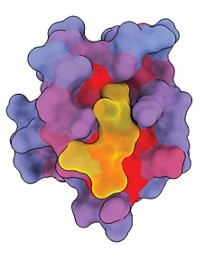Advertisement
Grab your lab coat. Let's get started
Welcome!
Welcome!
Create an account below to get 6 C&EN articles per month, receive newsletters and more - all free.
It seems this is your first time logging in online. Please enter the following information to continue.
As an ACS member you automatically get access to this site. All we need is few more details to create your reading experience.
Not you? Sign in with a different account.
Not you? Sign in with a different account.
ERROR 1
ERROR 1
ERROR 2
ERROR 2
ERROR 2
ERROR 2
ERROR 2
Password and Confirm password must match.
If you have an ACS member number, please enter it here so we can link this account to your membership. (optional)
ERROR 2
ACS values your privacy. By submitting your information, you are gaining access to C&EN and subscribing to our weekly newsletter. We use the information you provide to make your reading experience better, and we will never sell your data to third party members.
Biological Chemistry
Where's the (Drug-Free) Beef?
Proteomics: Changes in protein expression could uncover cattle treated illicitly with growth-promoting hormones
by Laura Cassiday
April 8, 2011

Although the European Union banned the use of growth-promoting agents in cattle in 1989, some beef producers still treat animals with the drugs illegally. Now researchers have developed a sensitive technique to detect beef from cows given growth-promoting agents (J. Proteome Res., DOI: 10.1021/pr101255c).
Some beef producers treat cattle with drugs such as steroids, β2-agonists, and corticosteroids to increase the animals' size. Scientists debate whether trace amounts of these growth-promoting drugs in beef can harm humans; indeed, in the U.S., some growth enhancers are legal and used widely. Therefore, European regulators must screen imported as well as domestically produced meat for the forbidden compounds.
Detecting growth promoters in meat isn't easy, says Giancarlo Biancotto, an analytical chemist at the Istituto Zooprofilattico Sperimentale delle Venezie in Legnaro, Italy, because "classical analytical techniques often aren't sensitive enough." But because the drugs trigger strong biological responses in animals, Biancotto and colleagues wondered whether they could indirectly detect growth-promoting agents in beef by measuring changes in protein expression.
To answer this question, the researchers fed cattle commonly used growth enhancers, alone or in combination. Then they used a technique called two-dimensional differential in-gel electrophoresis to compare the levels of hundreds of proteins in the skeletal muscle of treated and untreated animals. With the help of mass spectrometry, the team identified 29 proteins that are expressed at different levels in control and drug-treated animals.
The researchers now plan to examine the levels of these proteins in beef samples from slaughterhouses, some of which may be contaminated with growth-promoting agents. A subset of these proteins could eventually form the basis for a tool to detect illicit growth-promoting drugs, Biancotto says.





Join the conversation
Contact the reporter
Submit a Letter to the Editor for publication
Engage with us on Twitter